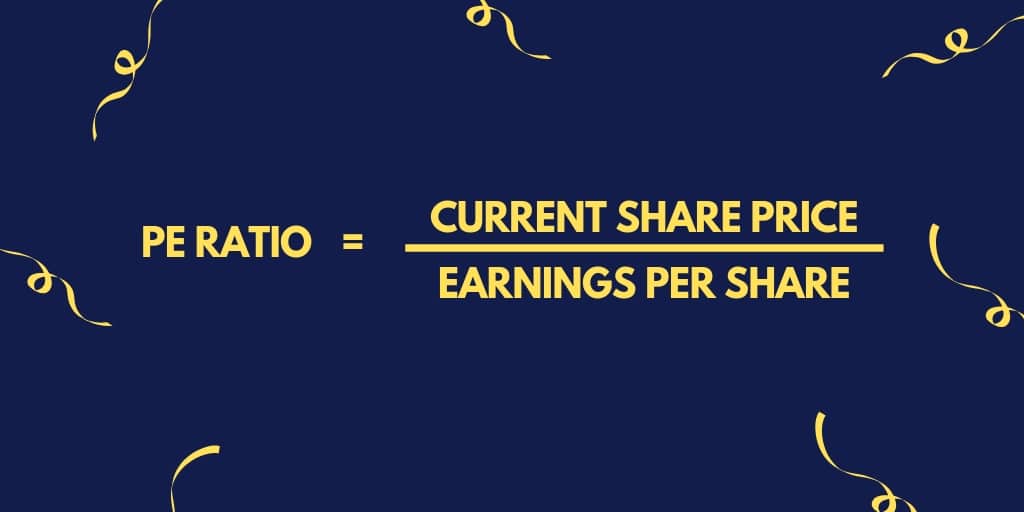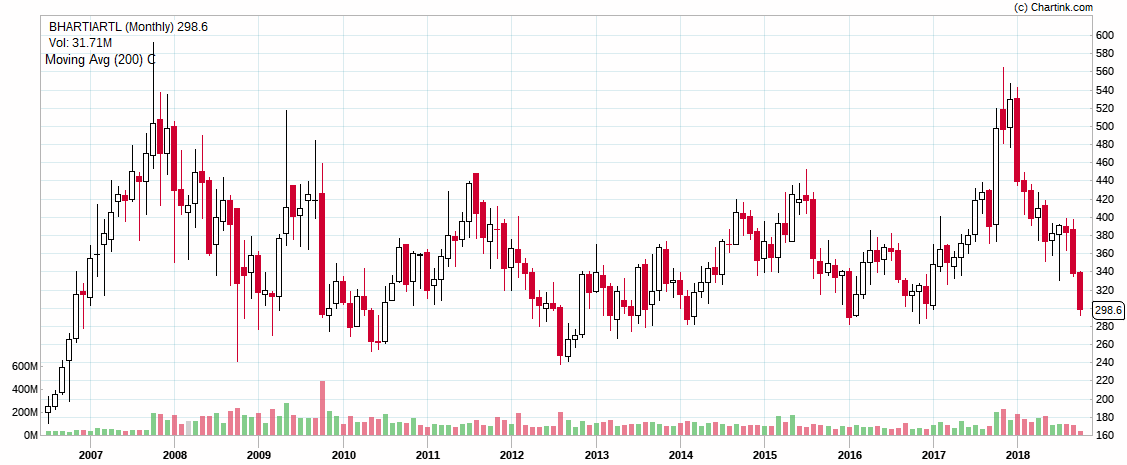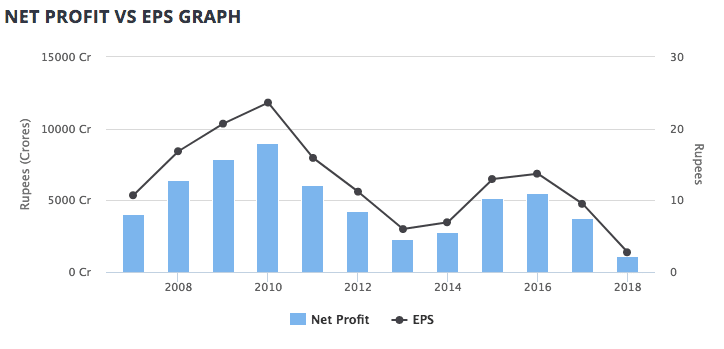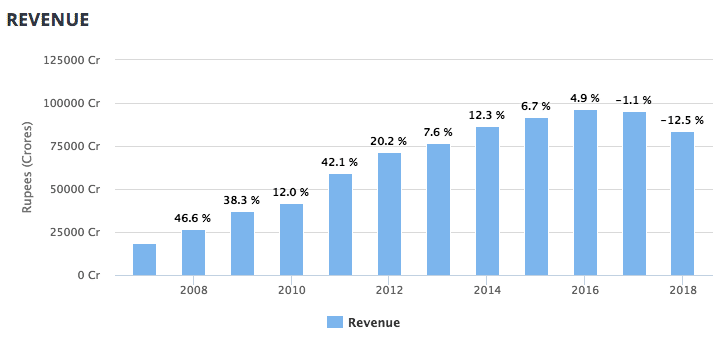Understanding the PE ratio and how to calculate forward PE ratio. Why the growth outlook doesn’t help even the long-term investors make money from the market?
What is PE Ratio?
PE Ratio or P/E Ratio or Price-Earnings Ratio is a ratio of the current share price of the company to its earnings per share.
Note it is the earnings per share and not the total earnings of the company in absolute terms.
Mathematically:

Why PE Ratio is Important?
The most important aspect for any investment in a company is its earnings potential. The price one pays is for the kind of earnings a company can generate in the future. Earning is the sole reason for an investment.
So the price to earnings ratio or PE ratio is an important aspect to investment because it helps to judge at what price an investment can provide better value.
In other terms, at what price multiple to its earnings, one should invest in a company. So it is a very important factor in valuing the company.
How PE Ratio Comparision Can Help?
One can see a lot of variation in the PE ratio of companies across sectors. So an absolute PE ratio doesn’t make much sense.
In India, FMCG companies have a much higher PE ratio when compared to other sectors. So PE ratio is an important aspect for valuing a company but it is also important that one doesn’t look at the PE ratio in isolation. It is to be used for peer to peer comparison.
My personal choice of investment is to invest in unique businesses that have pricing power. So sectorial PE comparison doesn’t help much. So I prefer the historical PE ratio a company has been trading in the market for an elongated period of time can help.
What is Forward PE Ratio?
The calculation of the PE ratio is based on the past earnings but what is more important for investors is the future PE ratio.
Like for example, the PE ratio of Page Industries is above 85 but then it also has a growth outlook of more than 20%. So one must not only consider the past earnings to determine if the stock is overvalued or undervalued.
If a company can show better earnings growth in the next few years, the current PE ratio may not be wise to determine the valuation.
How to Calculate Forward PE Ratio?
Using the growth outlook one can calculate the forward PE ratio of the company. Extrapolate the past earnings based on the long-term earnings growth for the company to determine the future earnings for the company.
Investello has the 5Y average EPS growth for a company and the current EPS. The EPS for Page Industries is

So one can extrapolate the next year’s EPS assuming the same kind of growth in the EPS.
So if the trailing 4 quarter EPS is ₹345.90 and EPS growth for the company for the past 5 years is 25%, one assumes the same kind of growth for next one year, one can calculate one year forward EPS for the company as ₹432. So at the current price of ~30k, it is trading at a 70PE multiple for one year forward earnings.
Similarly, the annual PE ratio is the above screenshot is 95 whereas TTM PE ratio is 85. So at 30k, considering only earnings till March 2018, the price to earnings multiple is much higher at ~95 whereas when June quarterly earnings are added, the trailing twelve months (TTM) earnings PE ratio drops to ~85.
Again the same kind of growth in EPS is considered but if there is higher growth in EPS is expected, the forward PE ratio of the company will decrease significantly.
On the contrary, if the business has given a significant jump in EPS but that may not be possible in the future, you may overestimate the future PE.
Why One Shouldn’t use only PE ratio to Invest?
The PE ratio is a good indicator of the companies earnings potential but more than business I like to see how good is the management.
Symphony had reported a drop in earnings because of bad summer. The stock has corrected almost 60%+ from its peak but it is still trading at a current PE multiple of ~40.
Another example can be Page Industries which in the current market turmoil has fallen 20% from its peak but is still trading at a current price to earnings of 85. Even when you consider the forward PE ratio, you won’t valuations very comforting.
Good businesses will always demand better valuations in the market.
Why Earnings is the Most Important Factor?
Investors don’t make money when they invest in companies where they see revenue or sectorial growth but what matters is the earnings growth.
Investors will make money when the stock they have invested in will have an increase in earnings and an expansion in price to earnings ratio.
Let me explain it with an example.
This is the chart of Bharti Airtel for the last decade.

Pre-2008 crash i.e. pre-Lehman brothers, Bharti Airtel was one of the leading stock for the rally.
The future of mobile was very bright back then.
Now we know, it wasn’t just an assumption in 2008 that mobile is the future. In 2018, we know for sure there has been an exponential growth in mobile users across India and worldwide.
Subscriber growth and revenue growth has been for these companies. Jio punctured the earnings for these companies but pre-2016, there isn’t too much money made by the investors of Bharti Airtel either.
It has everything one needs as an investor. Awesome management, booming sectorial growth, market leader to take advantage of growth, so on and so forth.
Yet investors didn’t make money investing in this stock.
Because though sector was growing, there wasn’t too much growth in the earnings for the company. Here is the chart of EPS of the company for the last decade.

Despite revenue growth which was expected as sector grew and Bharti Airtel being a market leader was able to take advantage of the growth.

Can the same be told about the nonbanking financial sector for 2018? The sector is expected to grow but can the companies grow its earnings considering the competition? I am not sure and only time will tell but it looks quite similar.



Leave a Reply